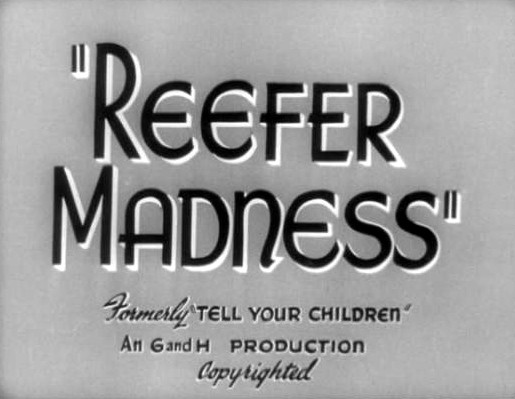Professors talk about the weaponization of marijuana

April 21, 2022
Once a common crop of the working class, marijuana was weaponized in the 20th century U.S. as part of a campaign of white supremacy, according to Jason Dormady, a CWU history professor. Dormady said that 20th century drug policies were largely motivated by race.
Dormady said the popular recreational and medicinal plant served a critical role in early anti-Black and anti-immigrant campaigns conducted by the U.S. government and private industry. According to Dormady, efforts were made to establish marijuana as a dangerous drug associated with Black, Mexican-American and European immigrant communities.
“Actual U.S. citizens were scooped up during the Great Depression and shoved out of the United States back to Mexico, a country they had never lived in,” Dormady said.
Dormady said marijuana’s later association with the counterculture movement was viewed by the establishment as a threat to order in the U.S. According to Dormady, these views carried with them the “racist baggage” of early attempts to eradicate marijuana.
Patrick McCutcheon, an anthropology professor, said, “Keeping marijuana illegal seems to have done one thing, which is lock up a whole bunch more people of color than people not of color.”
McCutcheon said that films like “Reefer Madness,” the 1936 anti-marijuana propaganda film, were incredibly effective in a time before fact-checking was commonplace.
“Back then, if you’re transmitted and it’s convincing, that becomes the truth,” McCutcheon said. “It’s about control.”
McCutcheon said drug policies are presumably in the best interests of the public but in application, disproportionately punish specific demographics.
“We know that there’s underlying structures where systematic discrimination, or what we would call racist behaviors, occur,” McCutcheon said. “Those are part of long-term structural changes that were made and maintained in our society to provide white privilege.”
In the U.S., Black communities are most affected by marijuana policies.
According to a 2020 American Civil Liberties Union report, Black people are almost four times more likely than white people to be arrested for marijuana related offenses, and a disparity in arrest rates persists even in states where marijuana is legalized.
Dormady said in the U.S., before anti-marijuana campaigns, hemp had industrial applications for clothing and rope fibers, and marijuana was used recreationally and medicinally by labor workers.
Dormady also said hemp’s applications in the paper industry threatened the business interests of media magnate and industrialist William Randolph Hearst, making it a target of smear campaigns conducted via Hearst’s publications.
“It was in Hearst’s best interests that there [was] shift away from industrial hemp,” Dormady said.
According to Dormady, Hearst’s strategy promoted marijuana as a dangerous drug and associated that danger with industrial hemp farming which merged the image of marijuana and hemp in the public eye.
Hemp is a type of cannabis cultivated specifically for its fibers.
While McCutcheon supports marijuana decriminalization and a return to industrial hemp, he said that education and treatment efforts should be made to temper any wide-spread adoption of such policies.
“There needs to be some kind of consideration of how that works in society,” McCutcheon said, “We need to have the research.”
McCutcheon said systemic discrimination has prevented further research into the applications of both hemp and marijuana.
“Somewhere along the line we decided whiteness was supreme and then forgot that we did that,” McCutcheon said. “That totally colored our worldview as discriminatory toward anybody that doesn’t look like us as European descendants.”
McCutcheon said even common terms like “stoner” have a negative connotation and reflect the ways that discrimination toward marijuana users has survived in our language. However, he believes that attitudes around marijuana are changing fast.
“I didn’t think when I was a young person, a college student, that marijuana would ever be legal,” McCutcheon said.
Origins
McCutcheon said certainly our relationship with plants has existed since our primate ancestors could walk on two feet, according to the fossil record, but likely extends further back. He said that some of the oldest records show plant domestication occurring in Southeast and Southwest Asia 15,000 years ago.
Dormady said marijuana’s earliest uses were likely for spiritual and medicinal purposes.
“Those uses never go away,” Dormady said.
McCutcheon said cannabis existed as two major varieties, an Old World variety and a North American variety, and those varieties have spread throughout the world.
Dormady also said the introduction of marijuana and hemp to the Americas occurred through international trade in the 1530s.
“It came from Spain, Spaniards brought it with them, and Africans brought it with them, and it [became] part of Native society in Mexico,” Dormady said. “Asians, Africans, Spaniards all introduce and bring marijuana into the Americas.”
In the U.S. it wouldn’t become much of a controversy until the 1920s.
Dormady said ending prohibition of marijuana and shifting more funds away from drug enforcement into healthcare would be a positive change with some considerations.
“There will be costs too,” Dormady said. “I’m glad that we’re maturing as a society enough to have a good debate on what we want to do and not just relying on old racist tropes.”

